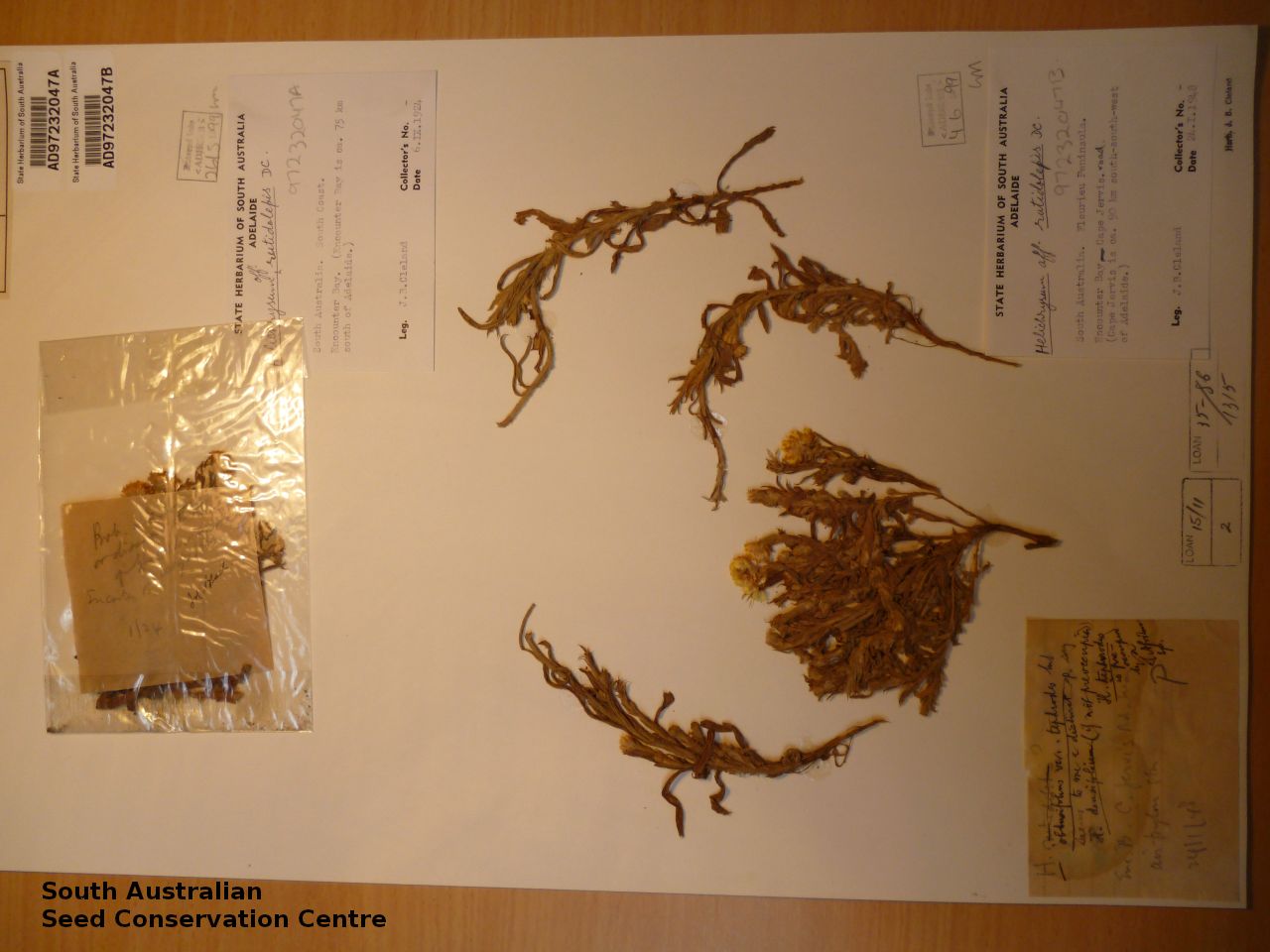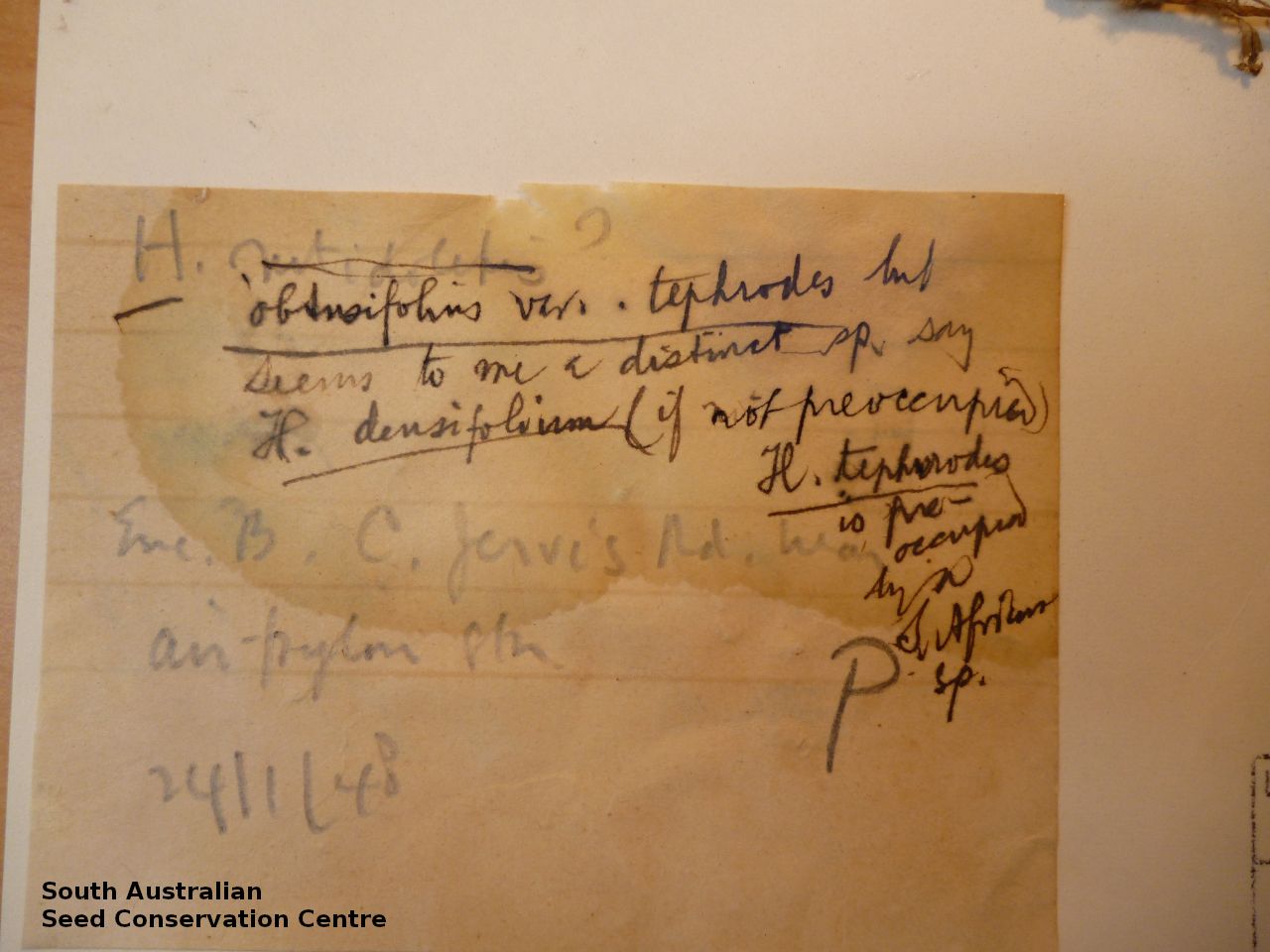






Prior names
Helichrysum scorpioides, partly
Common names
Dense Everlasting
Leafy Button Everlasting
Etymology
Coronidium from the Greek 'korone' meaning a crown and the diminutive '-idion'; referring to the short pappus crown that in the Coronidium oxylepis group of species remains on the cypsela after the pappus bristles have broken near their base and fallen away. Densifolium means having dense foliage and was one used by J.M. Black on the two collections made before his death in 1951. It was never published, but is appropriate to the leafiest of the members of the C. scorpioides complex.
Distribution and status
No extant population is known but was endemic to the southern Mount Lofty Ranges in South Australia, growing in broombush and mallee on laterite soils and/or open woodland and heath, including Banksia ornata over white sands. Native. Presume extinct.
Herbarium region: Southern Lofty
NRM region: Adelaide and Mount Lofty Ranges
AVH map: SA distribution map (external link)
Plant description
Ascending to erect rhizomatous perennial herb to 12 cm high, branches numerous from base and along main stems. Stems densely woolly but largely hidden by leaves (internodes shorter than leaves). Leaves lanceolate to oblanceolate, to 30 mm long and 6 mm wide, both surfaces initially cottony, but finally hispid to scabrous from retained coarse septate hair-bases, margins flat to recurved. Flower heads solitary, seemingly almost sessile at tips of branches, hemispherical to 15 mm diameter with pale yellow to brownish-yellow daisy flowers. Seed embryo type is spatulate.
Seed collection and propagation
Collect whole heads that are drying off and turning pale brown or collect just the seeds by plucking it out of the centre of the daisy-flower with your fingers. Mature seeds are easily removed. Place the heads in a tray for a week to dry. Then pluck the seeds from the head with your finders. Viable seeds will be fat and brown. Store the seeds with a desiccant such as dried silica beads or dry rice, in an air tight container in a cool and dry place.